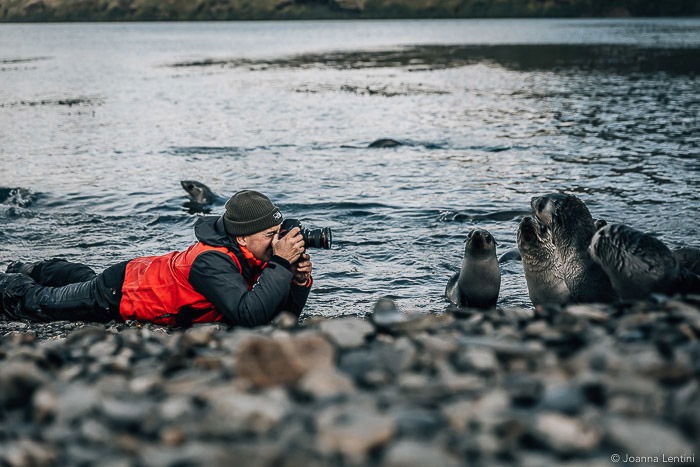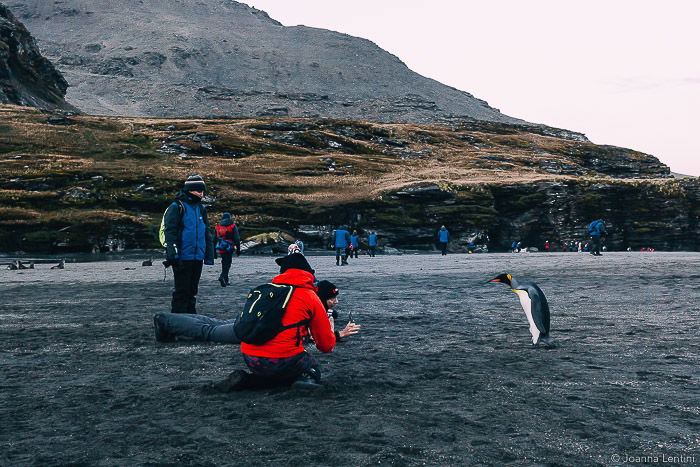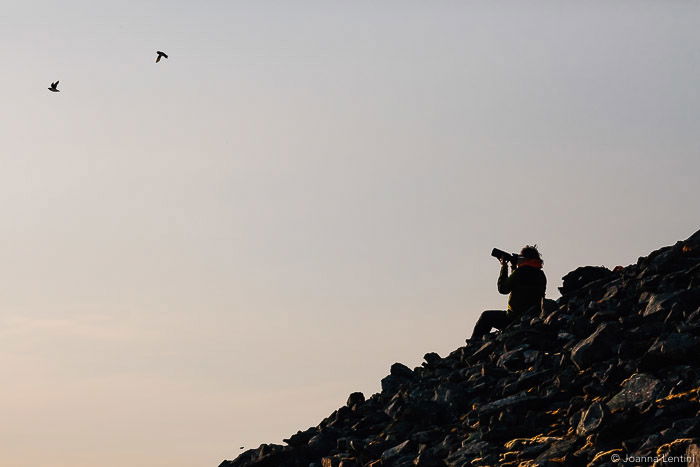Wildlife photography can be a lot of fun, but it's important to remember that when you're out in the field, you're dealing with wild animals. If you don't take the necessary precautions, you could get hurt – or worse, you could injure or kill the animal you're trying to photograph. Here are seven of the most important wildlife safety tips for photographers.
Let's face it, wildlife photographers tend to be loners, and for good reason. Finding wildlife is usually a craft.
The last thing many wildlife photographers want is another person around to scare off wildlife.
Each day photographers head out into the wilderness alone. Letting someone know where you are going and when you plan to return is a super important policy to have.
Many things can go wrong in the field. If no one knows where you are, or how to find you, a bad situation could get a whole lot worse.
Even if you plan to go with someone else, it is a good idea to still let someone know that is not joining you.
The weather can be very unpredictable in certain parts of the world. Anything could happen from flash floods, lightning storms, and sandstorms.
Knowing what is on the horizon could save you and your equipment a lot of headaches.
There are many apps that can help you keep an eye on changing weather. One app in particular that I like is by NOAA.
It provides users with real time hi-def weather radar images. And it even shows recent lightning strikes!
Having a waterproof cover for your camera bag and a rain cover for your camera is also important. This can save your equipment in the event of a surprise shower.
Packing extra lenses, filters, and camera bodies may seem important in the moment. But leave room for for a few survival tools too.
Depending on your familiarity with the location, it’s smart to carry items such as a compass, waterproof paper map, and a satellite phone.
Water straw/tablets to purify drinking water, a fire starter, and a knife take up very little room in your bag and are worth considering before you head out.
I recently came across a knit beanie hats that has a built-in LED light on the front of it. Being lost in the dark without a light source is not fun.
Remember, just because you know an area well, does not mean you can't get turned around or hurt. Get a basic first aid kit, plenty of water, and the items listed above. This will allow you to be self sufficient in the case of an emergency.
Are you shooting in a cold environment? The cold can drain car batteries. The last thing you want is to return to a car that won’t start.
If you find yourself in that sort of situation, in a remote area, it can’t hurt to have some extra water and canned food in the trunk of your car.

©Joanna Lentini
It's important to understand that you may bump into an animal that you were not planning to photograph. Be sure to research the animals that live in the area you are exploring.
If you are shooting in bear country, you'll want to read up on what to do if you encounter a bear. Sometimes camera lenses can be mistaken by a bear as a large and threatening eye. They have been known to cause attacks.
Carrying bear spray with you is another precaution. Be sure it is easily accessible and know how to use it quickly and properly.
Poisonous snakes are another type of animal to be aware of. Are there poisonous snakes where you are planning to shoot?
Do you know where they tend to aggregate, how to identify them, or what to do if you are bit?
Many snakes are harmless and great subjects to photograph, but it's best to know these things prior to a shoot.
No matter where it is that you are shooting, dressing appropriately should be a given. Wearing proper footwear, layered clothing, and sun and/or insect protection can prevent a number of problems. These include hypothermia, sunburn, injuries, and illness.
For outdoor photography in cold places, two pieces of equipment that make a huge difference for me are a balaclava and microspikes.
The balaclava protects my face from cold temperatures and wind. And the microspikes allow me to glide effortlessly over icy terrain.
Overheating can be life threatening in cold climates. Overexertion leads to sweating and wet clothes. Avoid cotton and opt for wool or polypropylene inner layers.
While the right materials can help, ultimately try not to overdress. Add layers as you need them, not the other way around.
Do you shoot in warmer climates? Try to pick your clothing carefully. Some offer built-in insect repellent and/or UV protection.
Whatever climate you are shooting in, opt for clothing that is built to last and doesn't make a lot of noise when you move. This is a very important consideration for wildlife photographers. Being a fly on the wall is very important.
Clothing that rustles as you move will alert wildlife of your presence.
Walking into the wind helps keep your scent behind you, and thus wildlife unaware of your arrival. But your arrival will still surprise and possibly threaten any animals you encounter.

©Joanna Lentini
Overcrowding animals can not only scare them away, but it can also put you and the animal at risk if it feels threatened.
Don't underestimate small animals, as they can also be dangerous.
Long lenses make it easy for wildlife photographers to get close to their subjects without disturbing them.
If you don't have a long lens consider purchasing or making a hide. A hide is essentially any structure that can be used for wildlife viewing.
It can be of a temporary or permanent nature and allows photographers to get very close to wildlife without disturbing it.
At the end of the day, showing respect and providing your subject with the appropriate amount of personal space will translate into better images.
This last safety tip is a bit on the humorous side, but still important.
Damaged equipment generally won't hurt you physically. But it can certainly have a negative effect on your mental and financial health!
Rain covers for your pack and camera make a lot of sense when you are spending hours or days immersed in the elements. But there are other things we can do to protect our equipment whilst outside.
If you will be spending a great deal of time in the outdoors, as most wildlife photographers do, it may be wise to invest in a camera body and lenses that are weather sealed.
If a lot of your work takes you on or near the water, you can take things a step further. Purchase a one size fits all waterproof camera housing for a lot less than a traditional underwater housing.

©Joanna Lentini
Photographing wildlife is a very rewarding genre of photography. But there are many more risks associated with it than other types of photography.
The best way to mitigate risks and keep ourselves safe is by being prepared. Our primary objectives as wildlife photographers should be our personal safety and respecting the wildlife we are shooting.
Once those two points are covered we can focus on creating great wildlife images.
Looking for more wildlife photography tips? Check out our new post about wildlife clothes next!